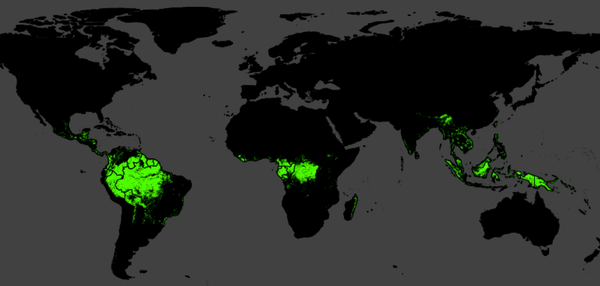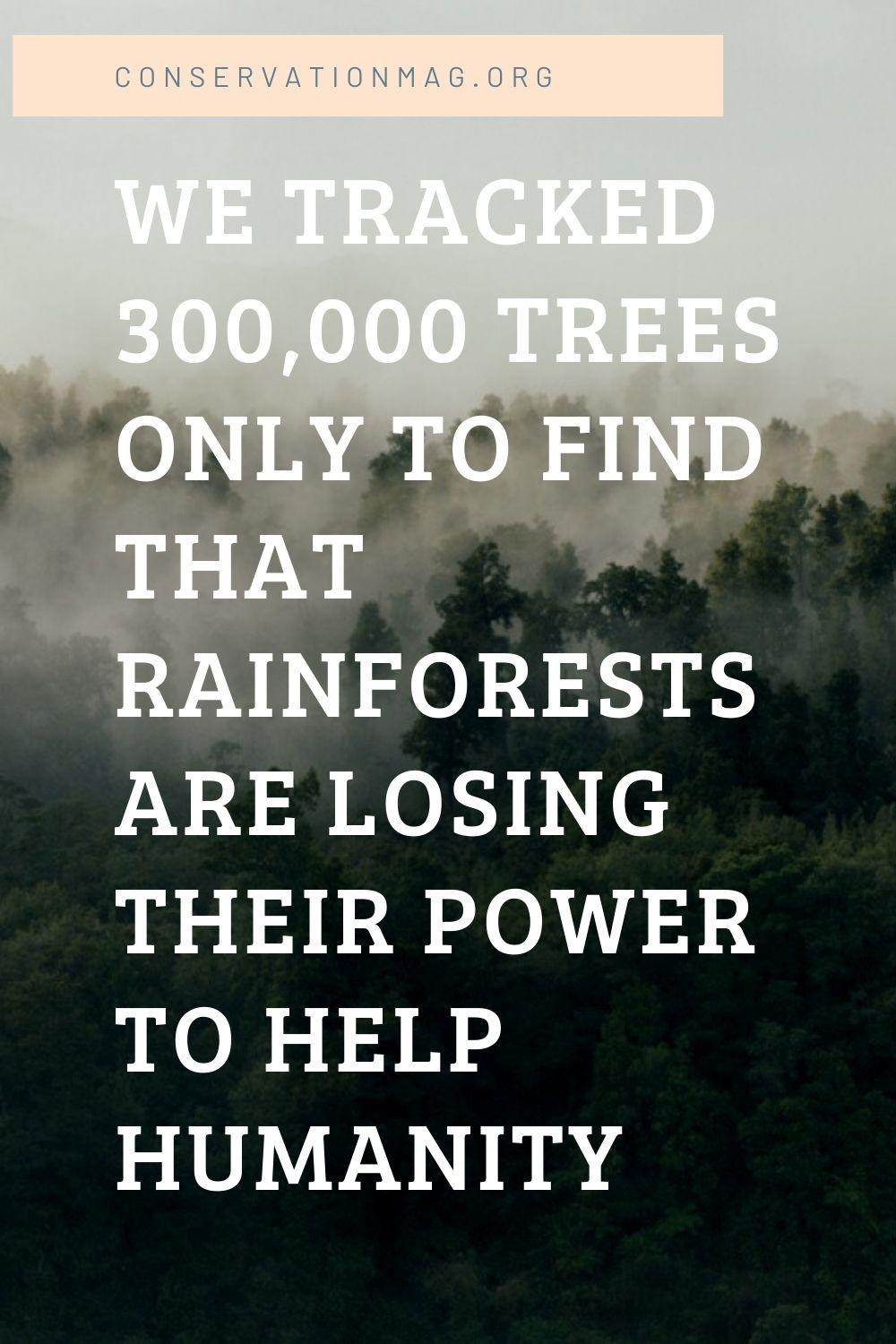Tropical forests matter to each and every one of us. They suck colossal quantities of carbon out of the atmosphere, providing a crucial brake on the rate of climate change. Yet, new research we have just published in Nature shows that intact tropical forests are removing far less carbon dioxide than they used to.
The change is staggering. Across the 1990s intact tropical forests – those unaffected by logging or fires – removed roughly 46 billion tonnes of carbon dioxide from the atmosphere. This diminished to an estimated 25 billion tonnes in the 2010s. The lost sink capacity is 21 billion tonnes of carbon dioxide, equivalent to a decade of fossil fuel emissions from the UK, Germany, France and Canada combined.
How did we reach such an alarming conclusion, and how is it that nobody knew this before? The answer is that we – along with 181 other scientists from 36 countries – have spent years tracking individual trees deep in the world’s rainforests.
The idea is simple enough: we go and identify the tree species and measure the diameter and height of every individual tree in an area of forest. Then a few years later we return to exactly the same forest and re-measure all the trees again. We can see which grew, which died and if any new trees have grown.
These measurements allow us to calculate how much carbon is stored in a forest, and how it changes over time. By repeating the measurements enough times and in enough places, we can reveal long-term trends in carbon uptake.

Most of the world’s primary tropical rainforests are found in the Amazon, Central Africa or Southeast Asia. ~ Hansen/UMD/Google/USGS/NASA, CC BY-SA
First we need partnerships with local experts who know the trees and often have older measurements that we can build upon. Then we need permits from governments, plus agreements with local villagers to enter their forests, and their help as guides. Measuring trees, even in the most remote location, is a team task.
The work can be arduous. We have spent a week in a dugout canoe to reach the plots in Salonga National Park in central Democratic Republic of the Congo, carried everything for a month-long expedition through swamps to reach plots in Nouabalé Ndoki National Park in the Republic of Congo, and ventured into Liberia’s last forests once the civil war ended. We’ve dodged elephants, gorillas and large snakes, caught scary tropical diseases like Congo red fever and narrowly missed an Ebola outbreak.

Wading through swamps in Nouabalé Ndoki National Park. ~ Aida Cuní Sanchez, Author provided
After sometimes a week of travel, it takes four to five days for a team of five people to measure all 400 to 600 trees above 10 cm diameter in the average hectare of forest (100 metres x 100 metres). For our study, this was done for 565 different patches of forest grouped in two large research networks of forest observations, the African Tropical Rainforest Observatory Network and the Amazon Rainforest Inventory Network.

Researchers in Cameroon measure a 36 metre high tree. ~ Wannes Hubau, Author provided
Managing the data is a major task. It all goes into a website we designed at the University of Leeds, ForestPlots.net, which allows standardisation, whether the measurements come from Cameroon or Colombia.
Many months of detailed analysis and checking of the data followed, as did time for a careful write-up our findings. We needed to focus on the detail of individual trees and plots, while not losing sight of the big picture. It’s a hard balancing act.

One of the authors in Rep. Congo with Noe Madingou of Marien Ngouabi University and other local guides and researchers. ~ Aida Cuní Sanchez, Author provided
The declining carbon sink results provide pretty grim news and not what we would like to report. But as scientists, we have a job is to follow the data wherever it takes us. That can be far into the rainforests of Congo, or onto the TV to tell people about our work. It’s the least we can do in the climate emergency we are currently living though. We will all need to play a role in solving this crisis.
![]()
Wannes Hubau, Research Scientist, Royal Museum for Central Africa; Aida Cuní Sanchez, Postdoctoral Research Associate, University of York, and Simon Lewis, Professor of Global Change Science at University of Leeds and, UCL
This article is republished from The Conversation under a Creative Commons license. Read the original article.
Shop for a cause
Shop on amazon.com | amazon.co.uk



